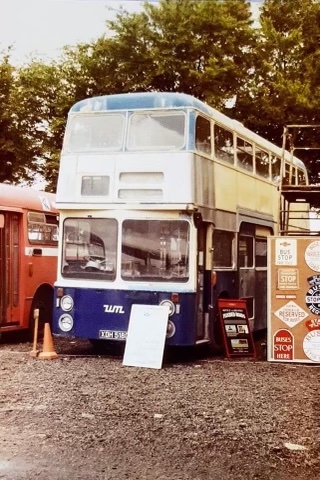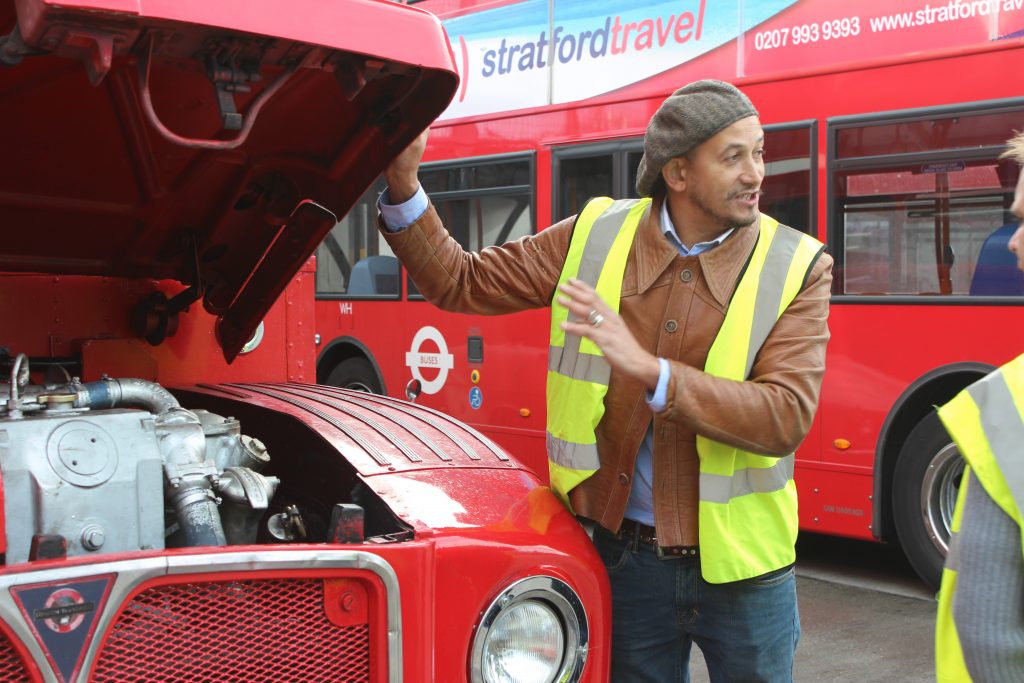“If you’re a bus nutter like me you know where they are and when they’re coming out of service. This poor old bus was one of only 109 built and I was responsible, in a way, for its fate; I’ll always feel like I’ve let an old friend down.
I’ve long had a fascination with buses. The ones that were around when I was a toddler had really mellifluous gearbox whines and combine that with the smell of leather seats and hot oil they seemed to me to be some kind of paradise.

Ordinary stop-start service buses are unsung heroes of the transport world. They are there for all kinds of people to use and are the hardest worked vehicles on the road because they’re run in the gutter all the time, whatever the weather. As a tot, seeing one of the bright blue buses that would take us to do the shopping in Sutton Coldfield coming round the corner was wonderful. Once on board I was in heaven just listening to all the sounds, it was like music.
When I left school at 16, I did an apprenticeship working on buses at The West Midlands Passenger Transport Executive, which I absolutely loved.
I’d noticed someone in the same year as me at college craning to see when an interesting old bus went past. I approached him one morning, on the bus, and said: “you’re really into buses aren’t you?” His name was Frank Sharkey, he went bright red and replied: “Err, yeah”. Back then it was a bit of a deep dark secret, but now it’s something I’m hugely proud of.


We clubbed together to buy a bus from the company and by December 1981, when I was 17, we’d saved enough to afford one. For the grand total of £823.40 we came away with a double-decker that was running and driving. The cost of the bus itself was £650, but the tyres were another few quid on top.
It was a Daimler Fleetline that dated from 1968. It had an entrance at the front as well as a sliding door in the middle – people thought it looked ugly, I did too, but that was also part of its fascination. The 10.45-litre Gardner diesel engine had a low, slow and lazy base note rumble. In contrast, the whine from the straight-cut drop axle gears became higher and higher as they increased in their rotational speed. It wasn’t the most delicious sounding but it did sing to me with a unique, sort of sonorous, slightly out of tune hum.
We’d secured a place to work on ‘XDH 518G’ at a fledgling bus museum on the outskirts of Worcestershire. Now known as The Transport Museum, it’s become a centre of excellence for bus preservation and restoration, but back then it was basically a shed with a heap of rubble strewn across the ground to form some hardstanding.
The plan was to restore it to its original condition, but we expected to make it happen almost instantly, and started by doing the one thing you shouldn’t do, which is to pull it all apart. A lot of people fall foul of trying to do everything at once, rather than tackling one job at a time, when they buy something to restore, and we certainly bit off more than we could chew – we took panels off and found corrosion, and we took bits apart then realised we couldn’t afford to replace the components.
We were becoming more skilled all the time, and enjoyed the minor archaeological processes involved (such as rubbing back the paint to find the original bright blue livery underneath, and lifting up seats to find tickets from the 1960s that had been stuffed down there) but very quickly we had a bus that no longer ran, and couldn’t be moved.
By this time, we were 18 and the prices of scrap had gone up. We’d been tempted by offers from dealers, but thought it would be better if we sold it to someone who would cherish it. We found a fellow enthusiast who said he’d do it up, so were able to walk away (with slightly more money than we’d paid for it) thinking it was in safe hands, and that’s where the regret starts.

We had a windfall of £500 each, which paid for a very good summer of going out, but the bloke who bought the bus took it to pieces even more than we had, and found himself in even deeper water. Eventually, he sold it for scrap.
What we should have done was hold on to it, have a re-think and persevered with our dreams. If I had the chance now I would restore it back to the condition that it came out of service in because my tastes have changed and I like things to look like they’re in mid-life.
Including XDH 518G, only three of the original 109 got sold on for further use. One of them turned up in my life a few years ago; it had been vandalised and was in a mess, but I managed to rectify the damage and make a little forward progress.
This time I knew I couldn’t give it the financial input it needed so donated it to National Express West Midlands for restoration at its Walsall garage, the one to which the bus was allocated when new, with the caveat that if they ever decide to sell it, I get to have first refusal. I’ll have a very nice warm barn waiting for it if they do, but if not, at least my actions later on in life have ensured one of the buses reached a safe home, and has a safer future.
The third bus was miraculously retained by the The West Midlands Passenger Transport Executive. Ironically, they sold it to a member of the museum I’d stored my bus at, so I’ve ended up working on it over the past 35 years. The bus is still there, and will be there for as long as the museum exists.
I don’t think you can pigeonhole transport enthusiasts, but they can be wonderfully nerdy. I’m a rock musician that’s played for Pop Will Eat itself, Bentley Rhythm Ace, The Beat, The Wonder Stuff, etc, at places like Glastonbury, and travelled around the world supporting bands like Nine Inch Nails, but I can spend hours going through fleet lists (even modern ones) and am able to spot a gap in the numbers that shows a bus has been taken out of service.
There are people that appreciate this kind of thing in all walks of life; Pete Waterman is not a man that you could call dull and we share a passion for railways. I think people who like shiny new cars and modern houses are very ordinary and it’s us slightly eccentric characters who are having all the fun.
The story of my bus that got away has a slightly bittersweet ending. At the end of the 2000s somebody came to me with the front panel which had been saved from scrap, and to this day that tiny little remaining bit sits in my garage.”
Read more
The One That Got Away: “Jake”, Sarah Crabtree’s ginger Mini
The One That Got Away: Drew Pritchard has finally stopped selling the cars he loves
The One That Got Away: Steve Parrish and the Yamaha TD2B that made him partially deaf









